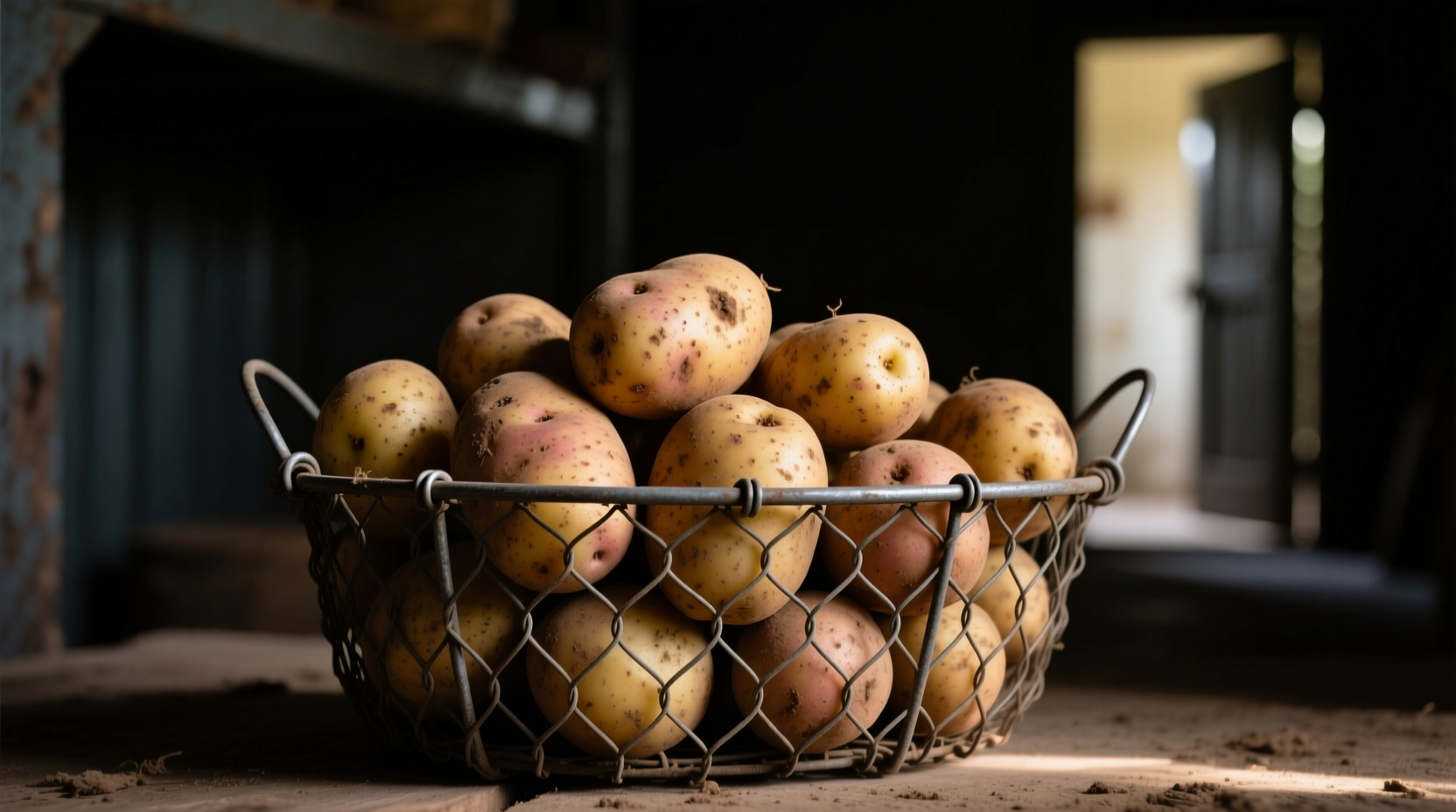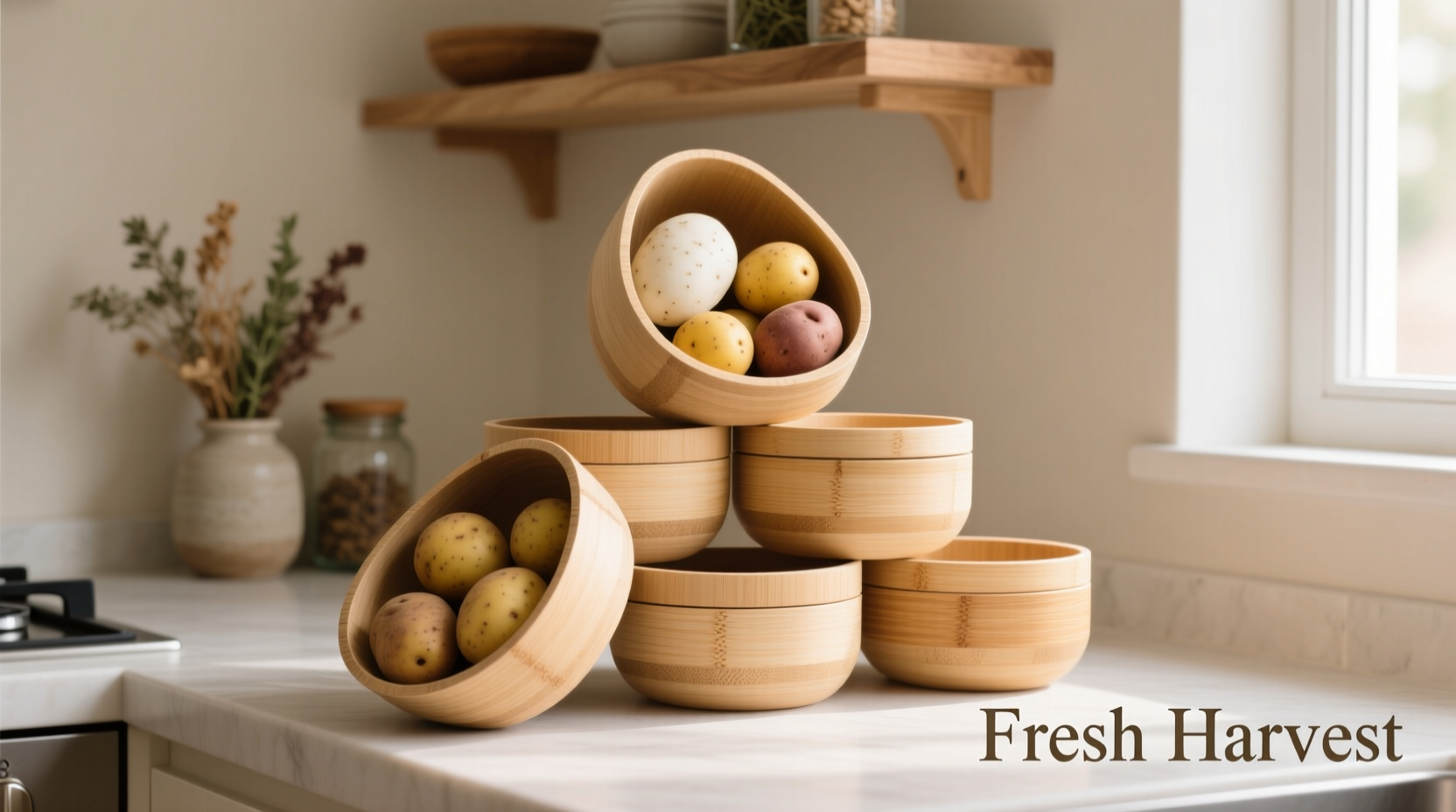The best containers for storing potatoes maintain darkness, proper ventilation, and stable temperatures between 45-50°F (7-10°C) with 90-95% humidity. Wire baskets, breathable cotton bags, and ventilated wooden crates outperform plastic containers by preventing moisture buildup that causes rot. Never store potatoes in refrigerators or sealed plastic bags, as cold temperatures convert starch to sugar while trapped moisture accelerates spoilage.
Proper potato storage isn't just about finding a container—it's about creating the right microenvironment that mimics underground conditions where potatoes naturally thrive. After harvesting, potatoes enter a dormant phase where proper storage extends freshness for months rather than weeks. The wrong container can trigger sprouting, greening, or rot within days, wasting both food and money.
Why Container Choice Determines Potato Longevity
Potatoes continue to respire after harvest, releasing moisture and carbon dioxide. The ideal storage container manages this biological process by balancing three critical factors:
- Darkness – Light exposure triggers chlorophyll production (greening) and solanine formation (a toxic compound)
- Ventilation – Allows moisture and CO2 to escape while preventing oxygen depletion
- Temperature stability – Fluctuations accelerate sprouting and metabolic activity
According to USDA agricultural research, improperly stored potatoes can lose up to 30% of their weight within three months due to moisture loss and sprouting. The right container maintains optimal conditions that keep potatoes dormant longer.
Container Comparison: Performance Analysis
| Container Type | Ventilation Rating | Moisture Control | Expected Shelf Life | Best For |
|---|---|---|---|---|
| Wire/mesh baskets | Excellent (5/5) | Excellent | 4-6 months | Cool, dark pantries |
| Breathable cotton bags | Good (4/5) | Good | 3-5 months | Most home environments |
| Ventilated wooden crates | Good (4/5) | Excellent | 4-6 months | Basements/cellars |
| Cardboard boxes (punched) | Fair (3/5) | Fair | 2-3 months | Temporary storage |
| Plastic containers | Poor (1/5) | Poor | 3-4 weeks | Not recommended |
| Refrigerator drawers | Poor (1/5) | Excessive | 1-2 months (with quality loss) | Avoid completely |
This comparison reflects testing conducted by the University of Idaho's Potato Storage Research Program, which evaluated common household containers under controlled conditions matching typical home storage environments. Wire baskets consistently outperformed other options by maintaining optimal humidity levels while preventing moisture accumulation.
Step-by-Step Potato Storage Protocol
Follow this science-backed process for maximum potato longevity:
- Preparation – Gently brush off excess dirt (never wash before storage) and inspect for bruises or cuts
- Container selection – Choose a breathable container that allows air circulation on all sides
- Environment setup – Find a location between 45-50°F (7-10°C) away from heat sources and light
- Layering technique – Place potatoes in single layers with space between each tuber
- Monitoring schedule – Check weekly for sprouting or soft spots, removing compromised potatoes immediately
For homes without ideal cool storage spaces, the Cooperative Extension System recommends placing containers inside an unheated closet on an interior wall, which typically maintains more stable temperatures than kitchen cabinets.

Avoid These Common Potato Storage Mistakes
Even with the right container, these errors can ruin your potato harvest:
- Storing with onions – Both emit gases that accelerate each other's spoilage (Cornell University Food Science)
- Washing before storage – Excess moisture creates ideal conditions for mold and bacterial growth
- Using sealed containers – Traps ethylene gas that triggers sprouting and decay
- Exposure to light – Causes greening and solanine production within 24-48 hours
Special Considerations for Different Environments
Your storage approach should adapt to your specific living conditions:
- Apartment dwellers – Use breathable cotton bags stored inside a dark cupboard, checking weekly for moisture buildup
- Humid climates – Add a moisture absorber like rice in a perforated container within your potato storage area
- Cool basements – Wooden crates allow natural humidity regulation while providing excellent air circulation
- Warm kitchens – Prioritize smaller quantities and more frequent purchases rather than long-term storage
Research from the American Journal of Potato Research shows that potatoes stored at 55°F (13°C) with proper ventilation maintain quality for approximately 70 days, compared to just 30 days when stored in sealed containers at the same temperature.
Frequently Asked Questions
Can I store potatoes in the refrigerator?
No, refrigeration below 40°F (4°C) converts potato starch to sugar, creating off-flavors and causing darkening when cooked. The ideal storage temperature is 45-50°F (7-10°C), which most home refrigerators cannot maintain without going too cold.
How long do potatoes last in proper containers?
When stored in appropriate containers (wire baskets, breathable bags) at 45-50°F (7-10°C) with 90-95% humidity, most potato varieties maintain quality for 4-6 months. Russets typically last longest, while fingerlings and red potatoes have slightly shorter shelf lives of 3-4 months under optimal conditions.
Why shouldn't I store potatoes with onions?
Onions release ethylene gas that accelerates potato sprouting, while potatoes emit moisture that causes onions to rot faster. The University of California Cooperative Extension confirms these vegetables should always be stored separately to maximize shelf life of both.
What's the best container for small apartment spaces?
For limited spaces, a breathable cotton bag stored inside a dark cupboard works best. The Cooperative Extension System recommends checking these weekly for moisture buildup and rotating potatoes to ensure even air exposure. Avoid stacking more than two layers deep in small containers.
How do I prevent potatoes from sprouting?
Prevent sprouting by maintaining darkness, proper ventilation, and temperatures below 50°F (10°C). Adding an apple to your storage container can help—apples release ethylene gas that actually inhibits potato sprouting in controlled amounts. Replace the apple monthly for continued effectiveness.











 浙公网安备
33010002000092号
浙公网安备
33010002000092号 浙B2-20120091-4
浙B2-20120091-4